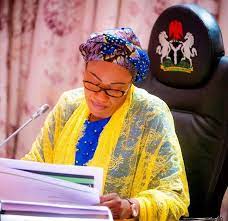The recent announcement by Nigeria’s First Lady, Oluremi Tinubu, of plans to reintroduce the Alternative High School for Girls is considered by education experts as a major step towards empowering some of the country’s most vulnerable young women.
This proposed institution aims to give girls who have dropped out of school a second chance at education.
As Mrs. Tinubu noted, the goal is to reach girls impacted by issues like teen pregnancy, domestic violence, human trafficking and drug addiction. By creating pathways back to the classroom, this initiative is expected to transform lives.
It is pertinent to note, in our view, that education is a fundamental human right, one that equips individuals to fully participate in human development efforts.
Yet for millions of Nigerian girls, social and economic barriers, inexplicably, block access to this vital social service.
As highlighted by UNICEF, about 7.6 million girls in Nigeria lack educational opportunities. Nigeria accounts for a staggering 15 per cent of the world’s out-of-school children.
It is disturbing to note that deeply embedded social norms like early marriage and childbearing restrict girls’ life choices. Across Nigeria, other obstacles like sexual violence, family health crises and unaffordable school fees also force girls out of classrooms.
Without education, girls lack skills to support themselves and access information to make informed choices about their health and futures. School dropout fuels the cycle of poverty and gender inequality.
In the considered opinion of this newspaper,that’s why interventions like the proposed Alternative High School for Girls are vital. Offering flexible learning options tailored to marginalized girls’ needs, these second chance schools can profoundly impact communities.
Their students gain literacy, numeracy and critical thinking aptitudes to participate in the economy. They build knowledge to make decisions about relationships, family planning and parenting. They connect to health resources and counseling to process past trauma. Alternative schools empower girls to envision and pursue better lives.
Nigeria is not alone in this educational crisis as globally, 132 million girls are out of school. But our nation is unique in the sheer size of its out-of-school population.
Educating and enabling half of the country’s youth who are female is key to Nigeria’s future. Study after study shows that when we invest in girls, the returns stretch across generations.
Educated girls participate more in the labor force, have smaller, healthier families and raise children who also attend school. Women who finish secondary school reinvest almost all income back into their families to improve living standards. Every extra year of female education can increase a country’s economic growth.
So beyond empowering individual girls, Alternative Schools for Girls initiative unlock social and economic potential on a national scale. We know that no single intervention can remedy this educational crisis alone.
But targeted, well-designed interventions can restore access for Nigeria’s most marginalized girls. Second chance schools recognize that traditional education systems fail to accommodate the complex barriers faced by vulnerable youth.
By offering flexible schedules, counseling services and linkages to health care, these schools meet girls where they are. Smaller teacher-student ratios, peer support systems and life skills training nurture positive learning environments where girls feel safe and supported.
Eliminating school fees and providing childcare, meals and transport, this initiative relieves financial pressures on the beneficiaries.
Crucially, Alternative Schools coordinate with communities and parents to reshape social attitudes about girls’ capacities. They collaborate with local leaders to identify out-of school girls and encourage their return to the classroom.
Community outreach helps families understand the future benefits of educating their daughters.
Alternative schools also train parent-teacher groups and community volunteers to advocate for girls’ education. This grassroots engagement ensures that marginalized girls, once enrolled, receive encouragement to persist in their studies.
For optimal national impact, the proposed Alternative High School for Girls will require robust government investment in teachers, facilities and resources.
Harmonising existing state-level interventions under one umbrella initiative can streamline efforts. A national coordination body can devise unified quality standards, curriculum frameworks and teacher training systems.
Centralised monitoring and reporting structures will track enrollment, attendance, retention and learning outcomes. Analysis of programmatic challenges and successes will allow for periodic refinement of the model. With comprehensive government backing, this second chance institution can nurture generations of empowered, educated Nigerian girls.
Girls elsewhere not just in Nigeria, represent the future-scientists, entrepreneurs, teachers, artists and leaders. When we deny them education, we diminish their promise and our own progress as a nation. For girls impeded by economic hardship, violence, health issues or family breakdown, the route to schooling is uncertain.
Alternative education programs build bridges over these abysses of despair. They send a clear signal – no girl is uneducable or her problems insurmountable. Given the right support, she can transcend life’s circumstances to claim her full potential.
It is from this perspective that we commend the proposed Alternative High School for Girls as it offers redemption; a second chance at the future.





